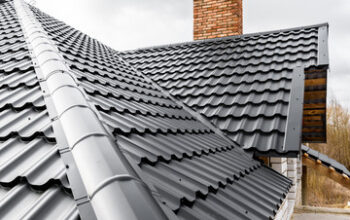If you’re looking to get your roof repaired, you may be interested to know that several different types of roofing repairs can be considered. These include repairing a ridge or sagging roof, fixing poor roof ventilation, and repairing flashing around pipes. Check out their website to learn more about roof repair.
 Repairing a sagging roof. Sagging roofs can lead to structural damage, leaks, and injury to people in the home. Fortunately, they can usually be repaired. But, if the damage is extensive, you may need to replace the whole roof. Sagging roofs are generally caused by a number of issues, including improper installation, weather, and moisture buildup. If you notice a sagging roof, be sure to contact a roofing professional. They can inspect the roof for potential problems and make recommendations on repairs.
Repairing a sagging roof. Sagging roofs can lead to structural damage, leaks, and injury to people in the home. Fortunately, they can usually be repaired. But, if the damage is extensive, you may need to replace the whole roof. Sagging roofs are generally caused by a number of issues, including improper installation, weather, and moisture buildup. If you notice a sagging roof, be sure to contact a roofing professional. They can inspect the roof for potential problems and make recommendations on repairs.
You should also know that sagging roofs can be caused by improper removal of snow and ice. Similarly, mold can grow on the exterior of a house, which can affect the health of occupants. Moreover, a sagging roof can be a sign that the roof is nearing the end of its life. Repairing a ridge on a roof. Ridge roof repair involves removal of mortar, which may be crumbling or have cracks. The old bedding material can also be removed. After cleaning the area, use a small trowel to smooth out the joint.
Roofing cement is an adhesive that can be used to secure the ridge cap in place. Before applying, dampen the underside of the roof. Once it has dried, press the roofing cement into the asphalt. It is recommended that the cement be pressed down one-eighth of an inch. If the ridge cap is leaking, the problem is most likely the pointing. Pointing is the area on the roof where the shingles meet. Any cracks in pointing can cause water to leak. To prevent this from happening, apply a silicone sealant to the exposed lip of the overlapping ridge cap. Allow it to dry for a day.
Repairing a leaky roof. Leaking roofs can damage your home, and it can be a tricky task to pinpoint where the leak is coming from. This is why it is always a good idea to know what the signs of a leak are. When you detect a leak, you should get it fixed. One of the first things to look for is water stains on the ceiling. These stains are generally brownish in color, and can be the telltale sign of a leak. Often, these stains are to the left or right of other stains, but it is a good idea to examine all areas of the ceiling.
Other signs of a leak are water spots on the ceiling, dripping water, bulging drywall, and a musty smell. These signs may be present in a few areas, but if they are spread across the entire ceiling, you have a leaky roof. Fixing poor roof ventilation. Roof ventilation is essential to your home’s health, energy efficiency and a whole host of other benefits. Without adequate airflow, your roof will be exposed to extreme temperatures, which could result in costly repairs and damage. In addition, poor ventilation can lead to a number of problems, including mold and mildew.
Roof ventilation is also critical to prevent moisture from forming in your attic. A buildup of moisture can cause rot in your rafters, drywall and ceiling. It can even result in paint deterioration and blistering. Several solutions exist to fix the problem. These include mechanical vents and cost-saving ventilation systems. If you need a new roof, you may be able to find some form of insurance.
Roofing flashing around pipes. If you have a vent pipe on your roof, it is important to install roofing flashing around it. This will help prevent water damage to your home. If you are doing it yourself, there are several types of flashing to choose from. The two most common types are aluminum and copper. These materials are both lightweight and durable. However, they won’t last as long as steel. Before you begin to install your pipe flashing, you must repair the underlying surface of the roof. Make sure there are no cracks in the shingles. Also, ensure that the flashing will allow for the movement of the projections.


